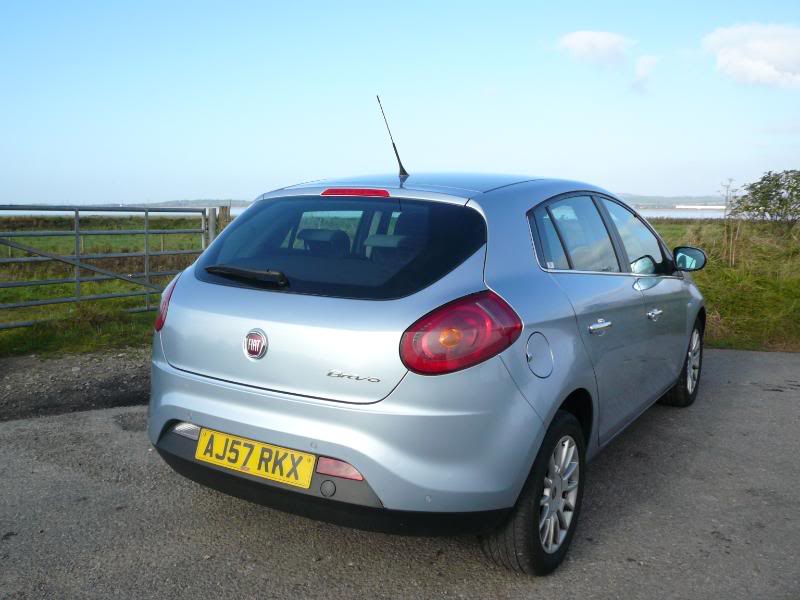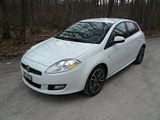
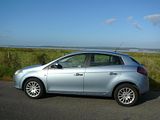
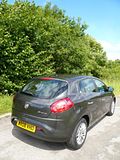
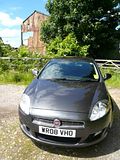
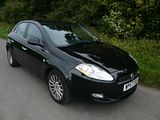

With a recent experience, albeit briefer than I intended thanks to discovering that the Hertz Gatwick location would close before my return flight was scheduled to land, of a diesel engined Fiat Bravo, I’ve now driven four different models in the range, so as well as assessing the merits of the car as a whole can present a more informed view on the optimum model to select within the Bravo family.


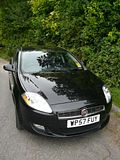
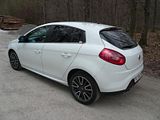
My introduction to the Bravo came with an entry level petrol engined car, a 1.4 Dynamic, fitted with the 89 bhp “Star-Jet” engine. What follows is the text of the initial report that I penned at the time (July 2008), as this did not survive the server move of the website.
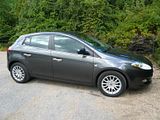
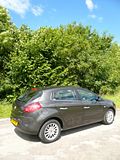


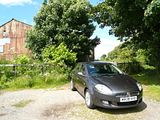
I have always had a soft spot for the cars of Fiat, even at times when the no-one else seemed quite so enamoured. There is little doubt that the Grande Punto – a car that even those who usually took some convincing to like the Torinese products found to be rather appealing – was just the saviour that Fiat needed, which transformed an ailing Italian conglomerate that was heading towards financial ruin into one who has posted impressive levels of growth and a return to financial stability again. With the launch of the Bravo in early 2007, the hope was that this car could repeat the same trick, and being larger and more expensive, potentially could both generate higher profits and also provide a product for those whose family size simply outgrew the Grande Punto. Press reaction was generally one of muted enthusiasm, so it was with some interest that I took delivery of my latest test car, a 1.4 Dynamic model, which comes fitted with the 89bhp 1.4 engine, in the hope of seeing whether this is a car solely for the loyal Fiat aficionado, or whether it has more mainstream appeal in one of the most competitive sectors of the market.
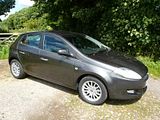
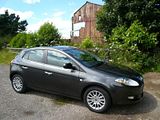



I collected the car at 11pm, in the dark, and drove it little more than a mile, before turning in for the night, so was unable to form many impressions. I did figure out that although the paperwork described the car as “gold”, it was not, and when I saw it in the daylight, it turned out to be a rather nondescript grey, a colour that Fiat call “grigio underground”, and one which proved a real photographer’s nightmare. I certainly would not choose a Bravo in this colour! The interior looked, at first glance, to be rather more appealing, with the seats trimmed in a sort of faux suede, with a woven inset, which I actually preferred to the really nasty nylon look stuff that is typically found in rental-car spec models of just about every volume seller on the market at present. Inspecting the cabin properly in the daylight, I became rather less impressed. This car had only done 677 miles, and yet there were marks on the door casing and the dash which I suspect would not readily polish out.
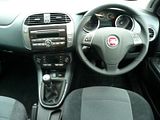
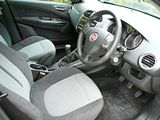
The dash itself is largely faced with a sort of pseudo carbon-fibre weave, which I thought was actually rather unpleasant. There was a sort of false ebony trim around the stereo system which I also did not like. The quality of the plastics themselves is certainly better than that which used to be encountered in a Fiat, and the mouldings all fitted well together. The dash itself is clear, with well marked dials in a main instrument cowl, a high-mounted stereo system, with the standard climate control unit mounted lower down, and then the part of the dash that faces the passenger curves away, so there is far more space for their left leg than their right one. The car came with the digital clock flashing unremittingly, and I had to resort to the handbook to figure out the correct combination of buttons to push to scroll through menus to fix this – I suspect the previous driver had simply not bothered.
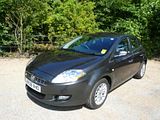

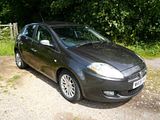
The seat proved quite comfortable, but I never really found the perfect driving position. I think an adjustment in and out for the column would have made the difference, as my arms seemed too long when I had the seat in the right place for my feet to reach the pedals and with the backrest set appropriately. There is ample space in the rear of the car, and a decent sized boot. The rear seat cushions do lift when you want more space, but it seemed to be necessary to set the front passenger seat well forward, and even having done this, the seat backrests did not go totally flat. Disappointing for a family hatchback. Oddment space in the cabin was a bit limited. There is a cubby between the seats, but whilst it proved very deep, it was surprisingly devoid of area, so you could probably stack a few drinks cans on top of each other, but nothing much bigger. There was a useful hole to the right of the wheel, door pockets and a reasonable sized glove box, and a very small area in front of the central cupholders, in which you could put nothing much of any size.

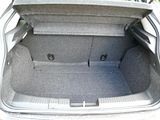

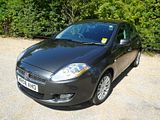
The redeeming feature of most Fiats, even the less than well received ones, always used to be the driving experience, typically summed up in the word “brio”. One of the reasons that the Stilo struggled in the market place was that it lost this attribute without getting close enough to taking on the other characteristics of its competitors. I had high hopes that the Bravo would fare better. As with many cars these days, there is no indication on the car of the engine fitted, let alone the power, so I initially assumed that I had actually got the second model up the range, which is endowed with 118bhp. For a 1400cc normally aspirated engine that is quite an impressive figure, and should, I thought, endow such a car, even allowing for the inflated weight of modern vehicles, with a decent turn of speed. Sadly, it did not really feel like this. The Bravo certainly proved amply brisk, but to achieve this, it was necessary to work the engine quite hard, at which point, it became less than refined. Not for the first time where a small engine delivers a lot of outright power, the real difficulty emerges when torque is required, and that was the feeling I had here. Even when changing down from 6th to 4th or even 3rd, once baulked on a motorway, regaining speed was quite a tedious and frustrating experience. It was only later that I discovered that the test car actually had the entry level engine, which develops a mere 89 bhp. Learning that fact did certainly help me to understand why I was disappointed by the performance, and also made me question whether this model actually makes that much sense. Whereas Fiats used to be renowned for their engines, the quality of the gearshifts was rarely anything to celebrate. With a very different feel from the precise “click” between gears that you get in a Focus, the change in the Bravo is definitely up to par, slotting cleanly between all 6 forward gears, and easily going into reverse. What was less good were the rather rough edges to some of the stitching on the gearknob itself which made it necessary to hold it quite carefully! The fact that the Bravo has a six speed gearbox did make for quite relaxed motorway cruising, though I was puzzled by a rather odd “thump” sound that seemed to be evident whenever changing lanes on the motorway. The car rode well there, and did prove comfortable. Like the Grande Punto, there is a button on the dash to lighten the steering, in what they call (so the light on the dash says) “City Mode”. This seemed to make the very light steering even lighter, for sure, but even not in City Mode, I would have liked far more steering feel than I seemed to get. There was limited opportunity to test the car other than on the motorway, but the handling seemed safe, but ultimately rather unremarkable.
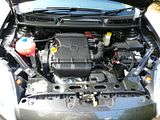

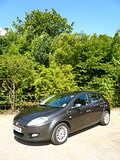
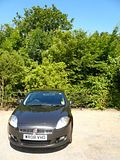
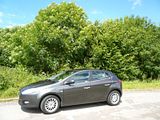
That, actually, could be the summary of the Bravo. I have to summarise by saying that I was rather disappointed by this car. There’s nothing seriously wrong with it, but it seemed not to have any stand-out features, either. I could think of no good reason why you should not buy one, but then, I struggled to think of one why you should. Perhaps this is not the optimum model in the range, but I have to conclude that the muted enthusiasm by the press last year appears not to be misplaced. Pity.

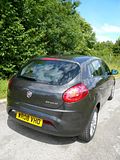



With a nagging doubt that I had not experienced the Bravo at its best, some weeks later, when I was offered another model, but this time a T-Jet fitted with the 150 bhp turbo charged 1400cc engine, I was eager to have another go. The Hertz location in Bristol who supplied the car told me that they have quite a job persuading people to take a Bravo, and have resorted to telling clients that if they really don’t like it, they can return and swap it out, but in the case of a T-Jet, no-one has ever taken up the offer.

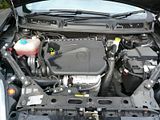
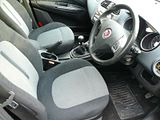
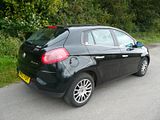
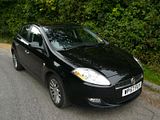
To look at, there is little visual difference from the lesser model that I had experienced a few weeks previously. T-jet badges on the grille and some stylised 150 badges on the front wings are about the only clue. Inside the car, it looked pretty familiar, too. Turn the key, select first gear and set off down the road and it was immediately obvious that was a far more potent machine. The Bravo more or less rocketed down the road to the nearest set of traffic lights. This turned out to be an absolutely cracking engine: potent, for sure, but smooth and with ample torque as well as just raw horsepower. It completely transformed the Bravo from something rather disappointing to something really rather agreeable. The other dynamics of the Bravo were as before, and I was somewhat relieved to find that the extra power to the front wheels did not seem to trouble the chassis, with no evidence of torque steer. Clearly, there was a price to be paid for the extra power, as the T-Jet was not quite so economical on a journey which turned out to be more or less the same (but in the reverse direction) to the test route for the 89bhp model, and the penalty of about 3 mpg was not, in my opinion too high a price, and indeed one I would willingly pay.


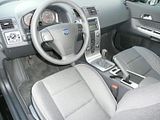

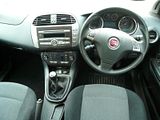
Handing that car back, my conclusion was that for the extra £1100, this was money well spent. The 150 bhp engine transformed the Bravo into something really rather desirable, and with that stealthy “Q” car factor.
Well, maybe not quite so “Q” car, as the third experience of a Bravo was also of a T-jet model, this time in Switzerland, when I had the car for a dark and grey day, during which I took it to Stuttgart to visit the then newly opened Porsche Museum.
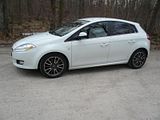
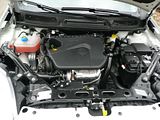
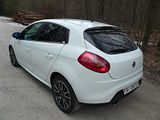

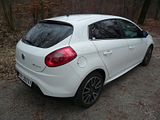
Whilst there was little different in the driving experience from my memory of the UK-supplied car, this one looked different both outside and in. Externally, the key distinguishing feature were the wheels. Inside, the whole interior ambience had been lifted by the red insets to the seat trim and on the doors, and the red stitching on the gearlever, handbrake and steering wheel. Some may think this a trifle garish – though compared to practice in the 1980s and 1990s for the sporting model of the range, this was quite restrained. Personally, I rather liked it.
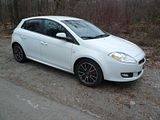

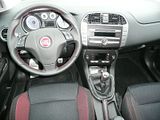
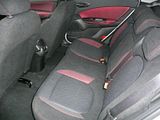
Bravo Number 4 was a diesel engined model. With many model ranges these days it is often the case that the diesel models are now preferable to the petrol cars, as they tend to develop similar power, have far more torque and offer vastly improved economy, albeit for a higher initial purchase price. Like all the previous UK test cars, this one came in Dynamic trim, and indeed internally it was identical to the models I had sampled before in the UK. It was fitted with the 150 bhp 1.9 litre JTD engine, which has recently been superceded by a cleaner, more powerful 2.0 version of the same motor. Although the test car car had “57” plates on it, it had only covered 22,000 miles, so I did wonder about its history, and unusually for a UK rental Fiat, it was plated from “Anglia” rather than “West”. The post-rental invoice showed a first registration date of April 2009, so I suspect that this is a car that was somehow pre-registered and never used (or the Hertz computer was simply wrong!). Be that as it may, what I wanted to know was what it was like to drive. Pretty good, is the simple summary. The Fiat/GM 1.9 diesel engine, although it has been around for a few years now, is definitely one of the better such motors that you find in family cars. Not quite up with the refinement levels of the latest diesels, it is still potent, and with huge reserves of torque that were not quite so evident in the petrol T-Jet model. For sure, it does still have the characteristic diesel soundtrack when you fire the engine up, and when driving at low speeds in the lower gears, your ears cannot fail to tell you that this is powered by stuff from the black pump. But as you gain speed, the noise levels abate, and the Bravo JTD cruises quietly, partly helped by the sixth gear. The torque characteristics of the engine mean that the car is good to drive around town, where you can certainly change down a gear for that extra acceleration if you want, but it is not always necessary or sometimes even that helpful to do so. The test mileage was short, and there is no doubt that I returned the car with a rather fuller fuel tank than the apparently full tank was when I took delivery, so I cannot on the fuel consumption, but I can be sure it would be significantly better than anything you would see from the 150 bhp T-Jet.


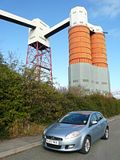
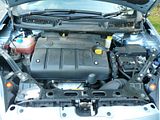
In all other respects, this Bravo was just as I remembered the three previous test cars to be. I still do like the faux suede seat material, and still do not like the odd texture to the dash. The steering is too light, even without pressing the “City Mode” button.
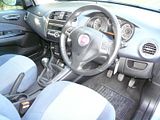
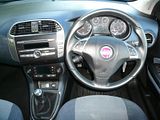
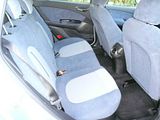
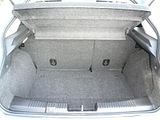
So, it is clear to me that the 89bhp model does not have a chance, and simply needs more power. But 150 bhp petrol or diesel? A hard choice, as I enjoyed them both, in slightly different ways. I think it would come to the kind of driving I would expect to do. Steady cruising on the motorways for most of the anticipated mileage would favour the diesel. Its better economy would win the day, probably. As a non-motorway car, though, the petrol car could be rather fun, and may well be preferable, especially as the total cost of ownership sums for the diesel are far from unequivocal.However, that assumes that the choice is only “which Bravo”. Just a few days earlier, I had the pleasure of testing a Golf 2.0 TDi, and my conclusion was that this was really rather good. No question that it is a “better” car than the Bravo in just about any objective measure. However, it is also a significantly more costly car. On paper there is a purchase price penalty of over £3000 for the Golf over a Bravo JTD, and I suspect that dealer discounts for the two cars would only see that widen. A prospective purchaser would need to examine their budget and their priorities very carefully to persuade themselves that they wanted to spend that much more money. Sales figures suggest that huge numbers of people can make that argument to themselves, as the Bravo sells in tiny quantities compared to the VW. For those who could not justify the extra spend and who ended up with a Bravo, at least until they encountered some of Fiat’s legendary dealer experiences, I don’t think they would be unhappy.
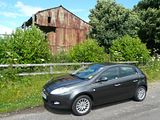
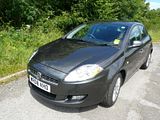
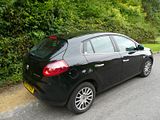
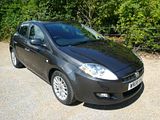
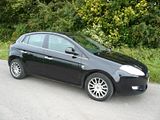
2009-10-24 08:39:46







































































